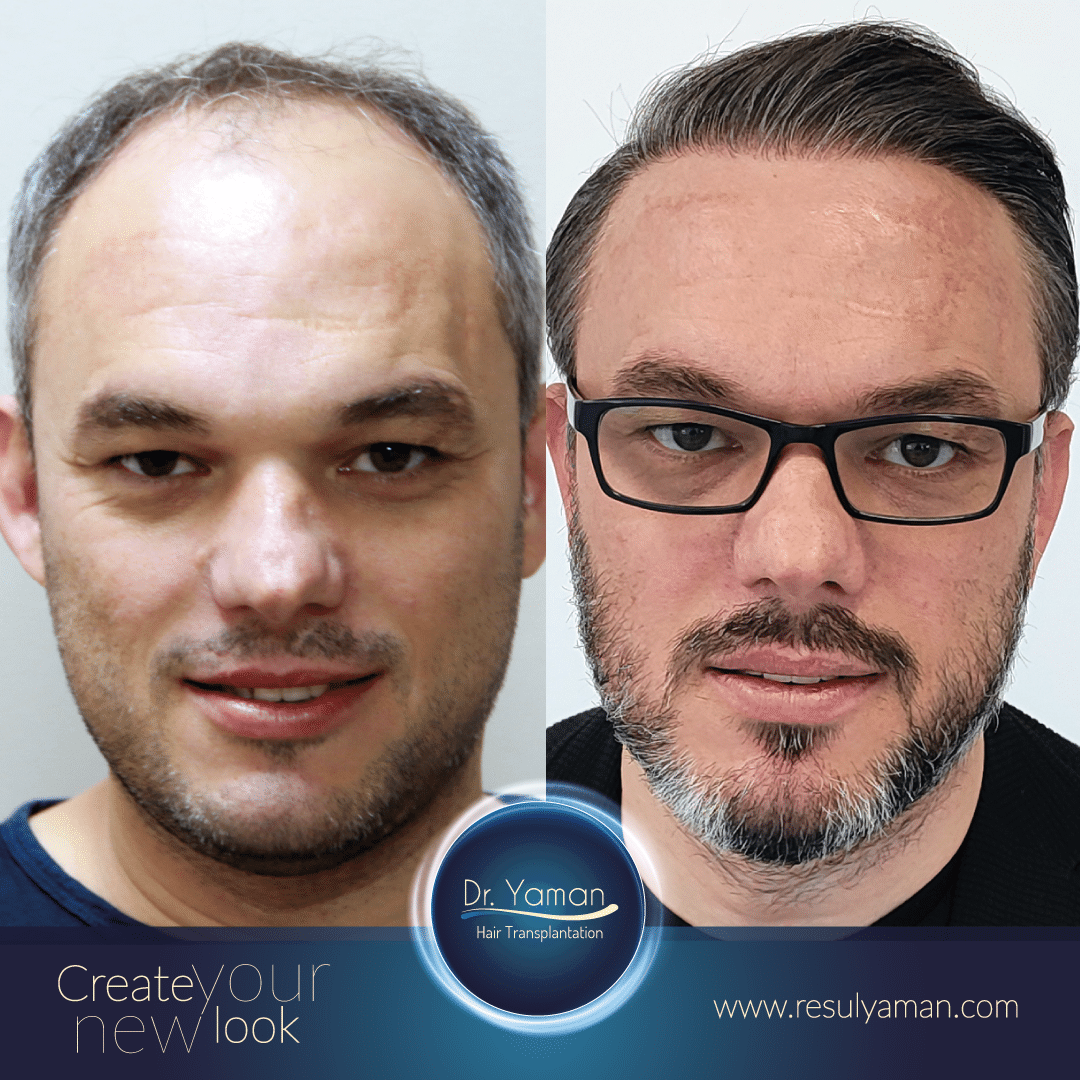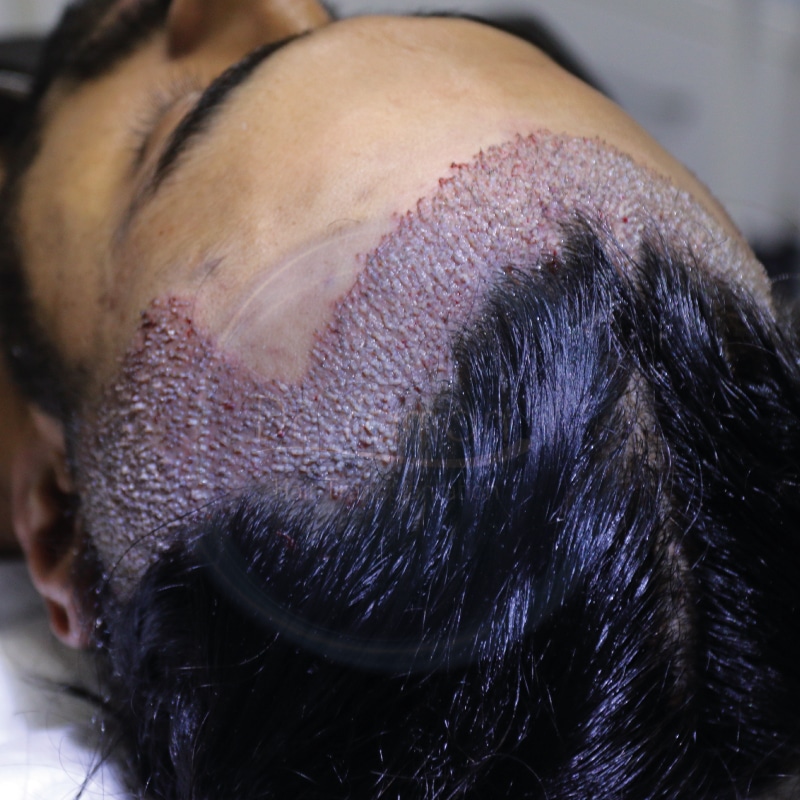One of the biggest concerns people have with hair transplants is the scarring. Sadly, there are many misconceptions about FUE scars and what your scalp will look like after a procedure. This results in people believing that their heads will look a mess with substantial scarring, ultimately putting them off having a life-changing hair transplant.
I want to put an end to these misconceptions and give you the facts. I want to show you that hair transplant scars are virtually invisible and that there is nothing to worry about with advanced techniques like the FUE procedure. So, does a hair transplant leave scars? Read on to find out.
Hair Transplant Techniques Scarring Effects
I want to first state that all hair transplant procedures leave scars. This is unavoidable because hair follicles are being surgically removed from your scalp including some surrounding tissue. The extent of the hair transplant scar, however, depends on the type of procedure.
Overview of FUT Method
Follicular Unit Transplantation is an older type of hair transplant procedure that involves surgically removing a strip of scalp tissue containing hair follicles from the back of your head. Individual grafts are then extracted from this strip and transplanted to your areas of hair loss.
Because a long, thin strip of tissue is surgically removed, this surgery leaves a long thin line scar on the back of your scalp. With shorter hair, this can be visible and compared to FUE surgeries, it is considered the less desirable option for disguising scars.
Overview of FUE Method
While FUT leaves a long, thin line scar on the back of your head, Follicular Unit Extraction leaves a series of tiny circular scars in the donor areas. There are usually more scars in FUE surgeries than in FUT, however, because they are individual and dispersed over a wide area, as opposed to concentrated into one strip, they are all but invisible.
The benefit of FUE scarring is that you don’t need to grow your hair to cover them up either. FUE scars are not visible even with a short haircut. Essentially, FUE is the best hair transplant procedure to have to minimize visible scarring.
FUE Scarring: Fact vs. Fiction
As you can see, scarring is far less of an issue than people believe but let’s take this one step further and look at some common FUE scarring facts and myths to boost your confidence even more.
Dispelling Myths About FUE Scarring
The first myth is that FUE hair transplant leave no scars at all. Unfortunately, this isn’t true. I am not sure where this myth comes from, but even at Dr. Yaman’s Hair Clinic in Turkey, FUE procedures do leave small circular scars.
The contrasting myth to this is that FUE hair transplants leave your head covered in hundreds of visible circular scars. This isn’t true either! I expect this myth comes from people looking at before and after photos, or finding worst-case scenario photos on Google of botched hair transplants.
Don’t do this! Google showcases the worst of hair transplants – instead, you should look at our before and after photos to see realistic end results.
What to Expect With FUE Scars
Each graft extracted from the donor area has the chance to leave a scar. These individual scars are incredibly small – roughly the size of a pinhead. Therefore, even with short hair, they are in most cases undetectable.
Unlike FUT strip scars, there is no need to grow your hair longer to conceal the scarring and you can have your newly transplanted hair in any style you want! The key to minimizing FUE scars is the donor selection areas. If the surgeon uses multiple donor areas on the back of your scalp, the chance of scars being visible is even less.
Realistic Scarring Assessment
Before you commit to FUE hair transplant surgery, you will have a consultation with the surgeon. They can give you a fair scarring assessment and tell you what to expect.
The extent of the scarring largely depends on the dispersion of the donor areas on the back of your scalp, and how many grafts you have. Essentially, each graft removed from the donor area leaves a small circular scar.
Therefore, the more grafts, the more scars. But, if the grafts are spread out and taken from different donor areas, the scarring is dispersed and even less likely to be visible.
Scarring is Minimal Depending on the Procedure Type
So, does a hair transplant leave scars? Yes, and this is unavoidable due to the nature of the procedures and the tools used to extract and implant hair grafts. However, if you opt for modern hair transplant techniques like FUE, DHI, and Sapphire FUE, the scarring is almost invisible and easily disguised when your hair has grown back to its original length and style.
 WhatsApp
WhatsApp Get Mail!
Get Mail!
 English
English Italiano
Italiano Español
Español Türkçe
Türkçe Português
Português Français
Français Deutsch
Deutsch عربي
عربي



